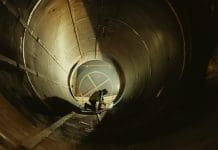The world of the internet is littered with countless articles, blogs and studies on the subject of overheating in buildings, and another has now been added
Overheating issues have been the subject of discussion amongst those that have had to live with it for years. But the carrot was never going to beat the stick in getting those who had the power to do something about it (i.e. the building design and build teams) to actually do anything other than pay lip service to it and do the bare minimum. If worst came to the worst, you could always use the blunt instrument of air conditioning to solve all of your overheating “problems”.
Rate and scale of building has intensified, more and more people are living in smaller areas in cities and the vernacular building solutions used in the past to limit overheating in buildings have been rapidly replaced by “International Architecture”. Many of the designs used are selected from a product book; a product that has been tested against a financial model to ensure the development can turn a tidy profit but not one that has had the user experience, energy consumption or health and wellbeing as any of its core design principals.
In recent times, some effort has been made to try to address the need to consider the mitigation of overheating in buildings (CIBSE TM59, BB101 etc.). The Good Homes Alliance has even recently released a checklist for early-stage designers to assess the overheating potential of their dwellings. This may begin to bode well for the buildings of the future but gives cool comfort for those that have been constructed in recent years.
The focus on energy efficiency and the tightening of fabric standards has been disconnected from the ventilation of the building with most still being designed with rules of thumb for percentage of floor area for window open-able area. Few then take into account the detrimental effect of window opening type and deep revels into the effective free area available to provide ventilation to space.
We’ve all walked through those hot, stuffy poorly ventilated corridors. High-temperature distribution systems, poor insulation and poor ventilation all further contribute to the heat build-up issues within the structure. There has been talk for years about using low-temperature distribution, maybe it’s time to do more than talk about them and follow the well-established lead from the likes of Denmark.
It can be hoped that upcoming changes to UK Building Regulations will jointly address the issues of both energy and overheating and ensure that appropriate mitigation measures are implemented by the design team. Apart from London, there are few parts of UK that have any planning requirement to address overheating and most only require a minimum Building Regulations compliant submission. There is far more than just anecdotal evidence these days to show this approach has led to some very badly performing places – but it’s OK as the computer said YES.
In a warming climate already, overheating buildings will be limited in solutions for the problems they face. It is estimated that there are 1 billion single air conditioning devices in use on the planet today, a figure that is projected to rise to 4.5 billion by 2050 and consume 13% of all electricity supply. The world warms so our individual response to this warming is to use devices that increase the warming and hence evermore binding us to the original problem.
The time has come for us to break our dependence on fossil fuel and the use of technology to “correct” our fundamental design problems and begin to design buildings around the user and the environment in which they live. The human is inherently adaptable and comfort (like most things) is no more than a state of mind.
The IESVE software helps you reduce your overheating risk by allowing you to model and assess design methodologies including TM52, TM59, BB101, BREEAM 2018, London Plan and more. Find out more about our solutions here.
Our newly designed training course “Using the IES Virtual Environment to assess the risk of overheating” reviews the multiple calculation methodologies, teaches you how to undertake analyses, and shows you how to investigate and communicate the results. Look for upcoming public courses here, or contact our training team to book a dedicated course.
Eric Roberts
ICL business development manager














